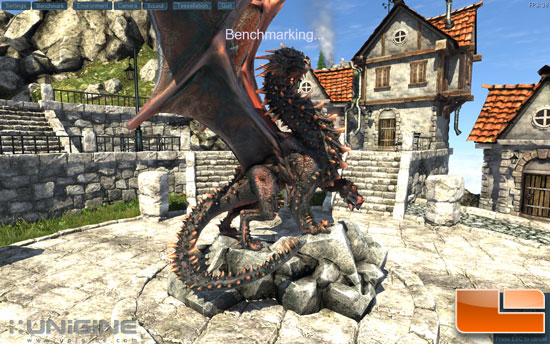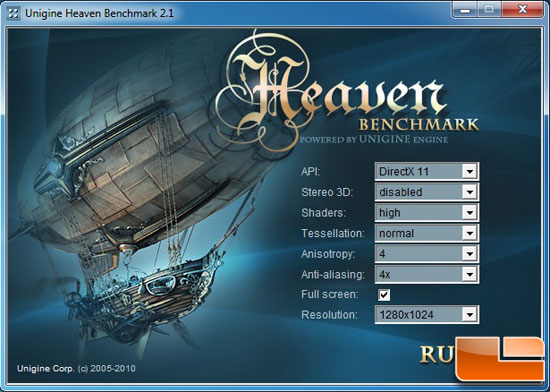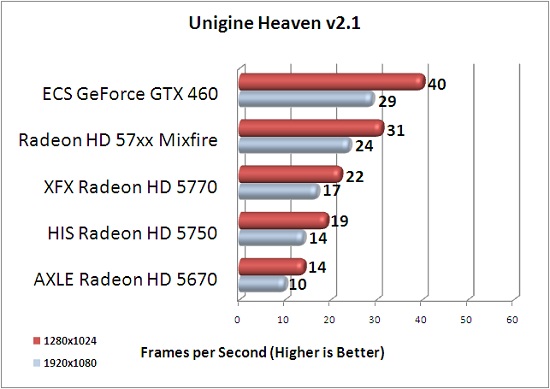ECS GeForce GTX 460 1GB Black Video Card Review
By
Unigine Heaven v2.1 Benchmark

The ‘Heaven’ benchmark that uses the Unigine easily shows off the full potential of DirectX 11 graphics cards. It reveals the enchanting magic of floating islands with a tiny village hidden in the cloudy skies. With the interactive mode emerging, experience of exploring the intricate world is within reach. Through its advanced renderer, Unigine is one of the first to set precedence in showcasing the art assets with tessellation, bringing compelling visual finesse, utilizing the technology to the full extent and exhibiting the possibilities of enriching 3D gaming. The distinguishing feature of the benchmark is a hardware tessellation that is a scalable technology aimed for automatic subdivision of polygons into smaller and finer pieces so that developers can gain a more detailed look of their games almost free of charge in terms of performance. Thanks to this procedure, the elaboration of the rendered image finally approaches the boundary of vertical visual perception: the virtual reality transcends conjured by your hand.

Heaven v2.1 was set to high shaders, with 4x AF, and 4x AA, on normal tessellation mode with DirectX 11.

The Fermi core architecture is highly optimized for tessellation; we know and saw this when the GTX 480 was scoring close to 5970’s at the time of its launch. The ECS GTX 460 1GB ended up ~30% faster than the mixfire at 1280×1024 and ~20% faster at 1920×1080, which is a healthy gain for a card that was 6% slower in 3DMark Vantage!

Comments are closed.